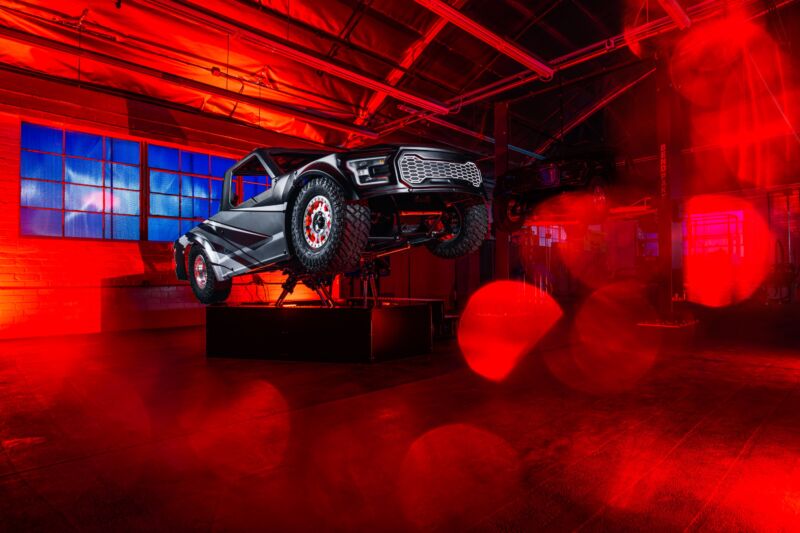
Racing simulators keep evolving as graphics get more and more realistic while physical motion systems innovate new ways to mimic the sensation of driving a real race car. The task of rendering the controlled environment of a well-known racing circuit makes most modern sims a bit easier to understand, and the physical footprints of screens, seats, VR goggles, and motion systems continue to shrink. But now, leading developer CXC Simulations has unveiled a massive sim that offers a more embodied experience of off-road racing. The project began in partnership with Norwegian Cruise Line, but CXC will now sell the Motion Pro Truck to the general public, albeit at a starting price of $600,000.
I visited CXC's headquarters in Los Angeles to learn more about how the wild physicality of high-speed off-roading translates to sim racing. After all, the company's most popular Motion Pro II sim setup typically features a compact racing seat, steering wheel, and pedals atop a small base platform, with the choice of one or three screens or a set of VR goggles. The Motion Pro II has proved popular since founder Chris Considine originally launched CXC out of his garage in 2007, to the point that his company now works with professional racing teams, enthusiasts, federal government agencies, the military, and law enforcement agencies on six continents.
I tested CXC's Motion Pro II, which is equipped with three 55-inch screens, and Considine loaded me into a Radical SR8 racecar at the Watkins Glen circuit. The realistic pedals and steering wheel feedback, as well as subtle tilting at the seat of my pants and seatbelts that tightened under hard braking, all contributed to a fun experience. And as someone who typically suffers from motion sickness, I never felt any nausea creeping in—while appreciating how much the wraparound triple screens contributed to a sense of speed that other single-screen sims entirely lack.
Advertisement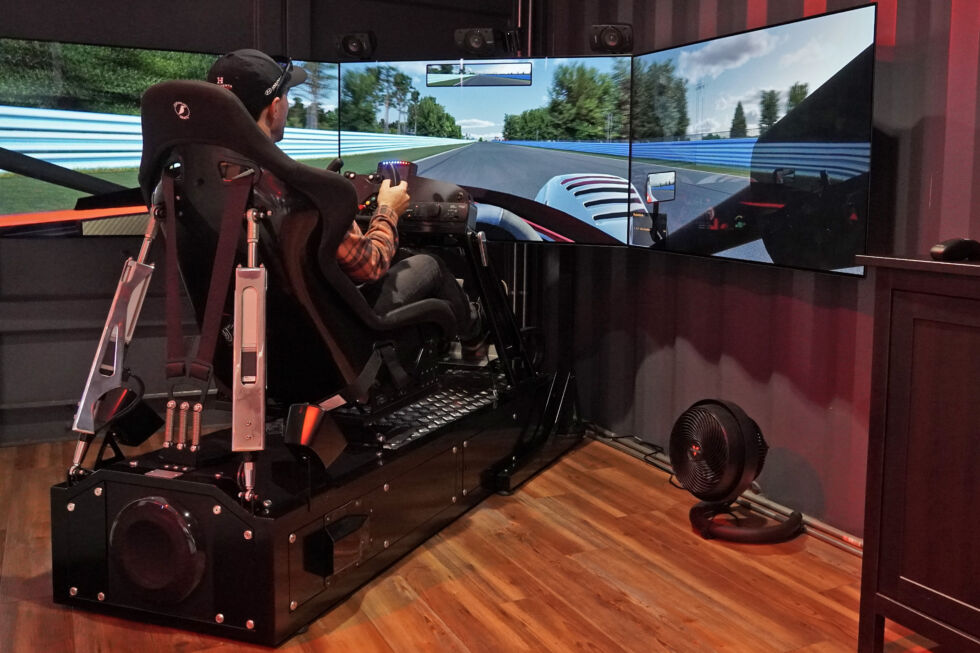
Despite never having driven at Watkins Glen, much less in a Radical, my skills began to improve noticeably after just a few laps. The Motion Pro II toed the line between gaming and training, as I witnessed my mind adapting to the divergent inputs, though I can still report that sim driving still can't quite match all the realities of driving a real car around a real track at high speed.
The Motion Pro Truck sat in a wide-open space behind a shipping container next to CXC's assembly line, where I spotted about 15 Motion Pro IIs in various stages of production. The sheer size surprised me since I knew the truck needed to fit on a cruise ship, so I asked Considine how the project of building a race truck sim came about in the first place.
Putting an F1 car on a cruise liner
"We've been building simulators for Norwegian [Cruise Line] for a little over 10 years now," he explained. "Every year, they typically order eight of our regular Motion Pro II simulators, and then what they call a halo project, which is something that is just so bonkers and so cool that everybody has to take pictures and share it on social and do all that sort of stuff," Considine said.
Previous installations included a sim built into a real Williams F1 car in 2009, then whole race car bodies that moved on motion systems. When Norwegian asked CXC to outdo those previous builds, Considine envisioned the truck as a concept to attract more spectators. And the sheer size factor surely succeeds in that regard.

There are no shrunken proportions here, as CXC sources a real Pro Lite chassis from the Lucas Oil Off-Road Racing Series for the truck itself. In total, the truck can move through six degrees of freedom, with about three feet of travel in every direction. The setup weighs about 3,000 pounds (1,360 kg) and runs on 400 V three-phase power, with a transformer the size of a mini-fridge nearby, next to a small standalone screen that initiates the sim and allows spectators to see what the driver experiences.
The VR headset currently runs iRacing tracks, though CXC also experimented with Dirt Rally 2.0. In terms of processing power, the system uses the latest Intel Core i9-13900K CPU, capable of a 120 Hz refresh rate. Programming the physical motion system to match off-road dynamics actually required toning down the capabilities of the Motion Pro Truck, though.
"It's way more powerful and faster than it needs to be," Considine said. "Especially for commercial use, because the first few times we had it up to like 70 percent of what it's capable of, and it was painful to drive."
After hearing that, I climbed in with a bit of trepidation. CXC needed to cut the door into the truck, but the original roll cage and race seat provide a sense of safety, given that a VR headset makes a helmet impossible to wear. After a few extra tugs on the safety belts, I adjusted the seat and slipped on the goggles, then moved them into the right position for ideal stereoscopic three-dimensional vision.
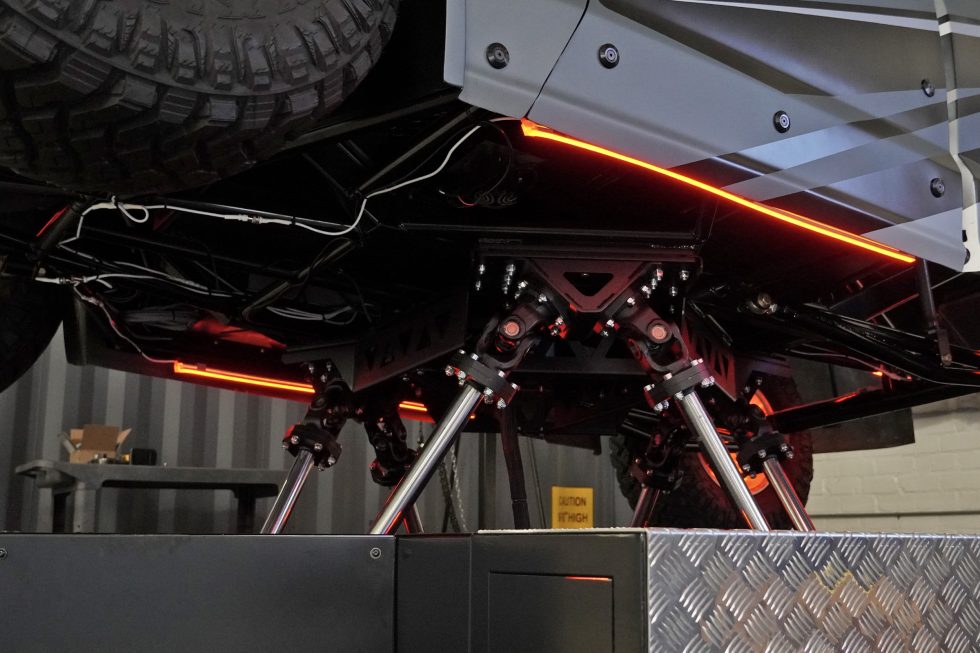
Shaken and stirred
With a pump of the "gas" pedal, the entire machine started vibrating. I wiggled the steering wheel, popped the handbrake, and spaced my left and right feet on the pedals—all while noticing what my real-world actions affected in the virtual reality my eyes were perceiving. After a deep breath, I was off for a few laps around iRacing's simulation of Wild West Motorsport Park.
I can proudly report that I somehow managed to avoid crashing for the first few laps, taking the course slowly and trying to follow the racing line. Left-foot braking or too much throttle prompted quick slides that were easily controlled by countersteering, while a few jumps solidly left me with a sense of weightlessness. Once the track started to feel familiar, though, I began to notice some of the more discrete physical inputs of the Motion Pro Truck.
AdvertisementThe chattering of tires on clumped-up dirt, crash landings after jumps, weight shifting while ripping sidelong, every sensation clattering through the entire truck, steering wheel, and seat. And this was just at the 60 percent setting that Considine described as ideal for entertainment sims! At 100 percent, I would definitely need a helmet and HANS device, which is not possible while wearing a VR headset. And Considine explained that at 100 percent, a steering column interlock would be necessary to prevent my wrists from breaking.
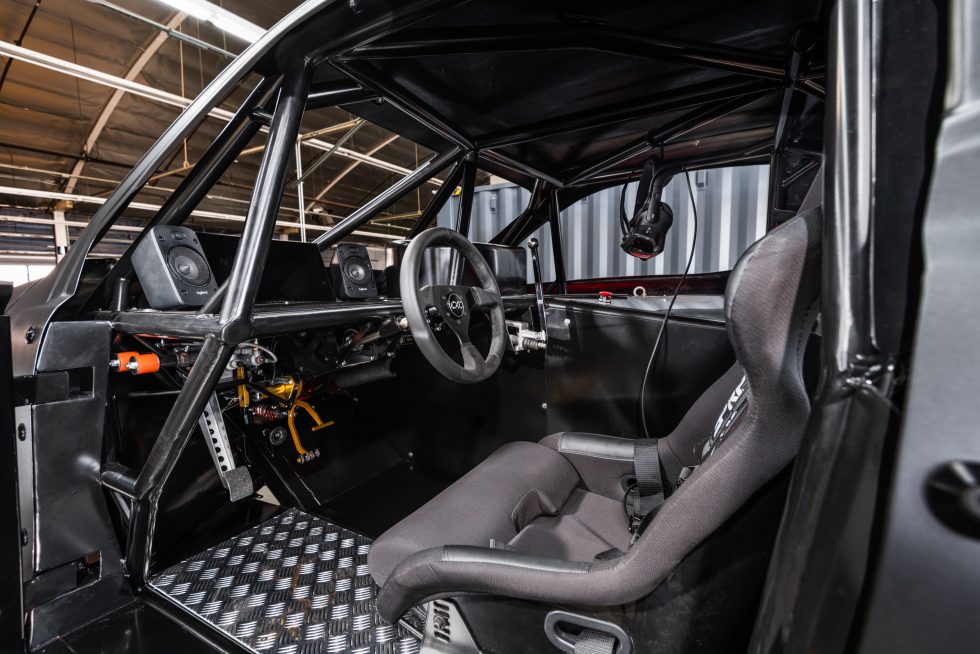
My ongoing conscious analysis may have let me survive longer than expected in the sim, but soon enough, I began to feel the familiar symptoms of motion sickness. Considine acknowledged that sims, and VR sims in particular, often cause motion sickness—but CXC believes that training step by step, starting with one eye covered or using only one screen, can help train the brain to accept the physical discrepancy and visual latency.
Only after I took the VR goggles off did I notice that an enormous fan stopped blowing speed-sensitive air to imitate the sense of motion. Similar to opening a window in a car, the fan probably helped hold off my motion sickness. I climbed out and let one of CXC's development engineers take a turn. Watching him bounce and bumble around inside the cockpit only made me more surprised that I lasted as long as I did. The dramatic appearance of someone driving the Motion Pro Truck is part of the point.
AdvertisementIt’s supposed to be entertaining
"Usually, entertainment sims are more about the people on the outside than the driver on the inside," Considine said. "It's about the spectator experience, the feeling, the visuals, all the things are more about the people on the outside. This is a nice balance of both. It's really good to experience in the sim, but it also looks really cool from the outside."
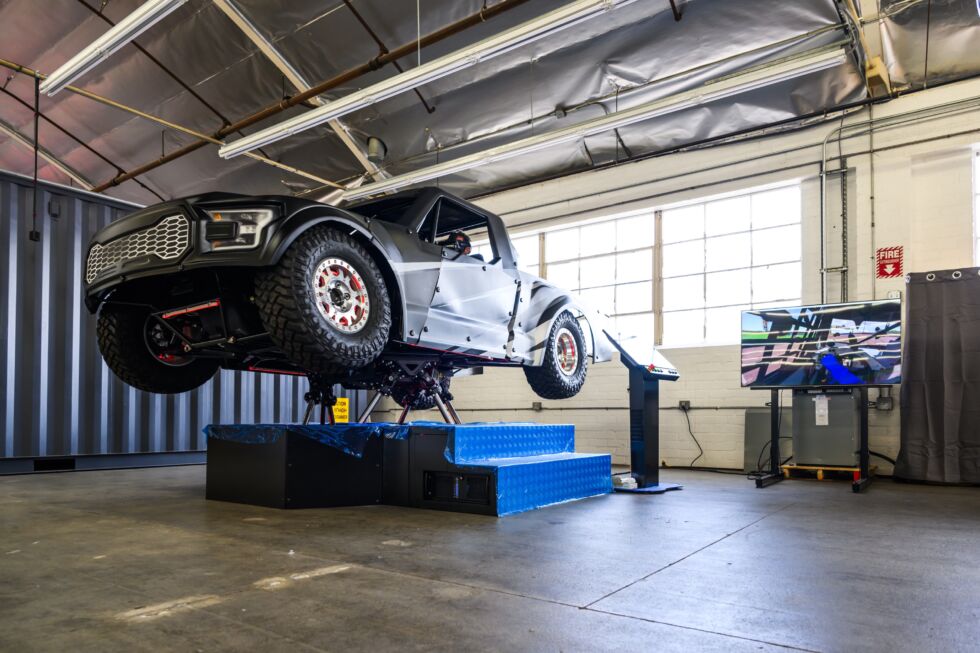
Because of the slight VR latency, tight focus radius, and jarring physicality, I think one of CXC's 28-foot dome screens might fit the Motion Pro Truck sim better than trying to compensate in virtual reality. Perhaps a bit more development between iRacing's software and the seat could also help to reduce the acclimation period. But the larger dome starts at around $800,000 on top of the Motion Pro Truck—not to mention how much bigger of a footprint would be required.
That kind of investment might work for a Norwegian cruise ship, but such a big number could well make the price to play simply too high for private buyers accustomed to CXC's more refined circuit racing sims. Plus, unlike the serious cost and time commitment of renting a racing circuit, off-roading a real-life Polaris RZR or Can-Am Maverick in the desert can come pretty close to the trophy truck experience at a fraction of the cost. Still, that's not racing, no matter how fast your buddies drive, and in the meantime, practice makes perfect. Just ask renowned sim-racing addict Max Verstappen.


















